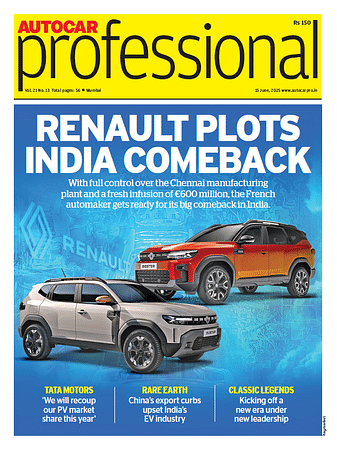India’s EV Sales Projected to Reach 138,000 Units in 2025: Report
Supported by evolving government incentives and increasing OEM activity, India’s electric vehicle market is set for a transformative year with an expected 40% rise in passenger EV sales, according to Frost & Sullivan.
India's electric vehicle market is poised for robust expansion with projected sales of 138,606 units in 2025, marking a significant 40% growth from the previous year's 99,004 units, according to a comprehensive new report by Frost & Sullivan.
The research firm's latest "Overview of Indian Electric Vehicle Market 2025 & Beyond" reveals that the Indian EV landscape is being driven primarily by battery electric vehicles (BEVs), which account for 99.9% of the market, while plug-in hybrid electric vehicles (PHEVs) remain minimal at just 0.1%.
The growth trajectory is being spearheaded by SUVs and subcompact SUVs, with Tata Motors maintaining its market leadership position. The company's popular models – Tata Punch, Tiago, and Nexon – dominated 2024 sales figures, with the Punch alone recording 22,724 unit sales.
"Presently SUVs and subcompact SUVs are driving the growth of EV sales in India," the report notes, highlighting a clear consumer preference for larger electric vehicles over traditional compact cars.
The market's rapid expansion has been significantly bolstered by government initiatives spanning nearly a decade. From the initial FAME I scheme launched in April 2015 with a ₹795 crore budget to the recent PM eDRIVE program announced in 2024 with ₹10,000 crore allocated, policy support has evolved from consumer incentives to component localization and global competitiveness measures.
"Incentive schemes have helped the EV market transform with initial support for consumers for direct purchase, with current focus on localization of components," the report emphasizes.
Despite the positive growth outlook, India faces significant manufacturing challenges. The country currently has high dependency on battery raw materials like lithium, nickel, and cobalt, while cell manufacturing capability remains in its nascent phase. Battery management systems and power electronics still rely heavily on Chinese, Japanese, and Korean companies.
However, the report identifies several game-changing technologies that could transform India's EV manufacturing landscape, including artificial intelligence, machine learning, digital twins, and advanced automation in production lines.
The charging infrastructure is expanding rapidly to support the growing EV population. Currently, there are over 25,500 public EV charging stations hosting approximately 60,000 connectors across the country. With 301,000 EVs on road, the current ratio stands at 1 connector for every 7 EVs, though experts recommend achieving 1 connector for every 5 EVs by 2030.
Karnataka leads in charging infrastructure with 5,765 connectors, followed by Maharashtra with 3,728 and Delhi with 1,941 connectors.
Looking ahead, Frost & Sullivan projects that by 2030, India's EV sales could reach close to 700,000 units annually, with "stiff competition between Tata, M&M (Mahindra & Mahindra) and MG with different types of business models."
The report also indicates strong possibilities for the introduction of PHEVs and extended-range electric vehicles (eREVs) in the Indian market, including alternative fuel combinations like ethanol-plus-battery and range extender options.
India's EV growth story aligns with global trends, as the worldwide passenger EV market is expected to reach 20 million units in 2025 for BEVs and PHEVs combined, recording a penetration rate of over 20% in light-duty vehicle sales.
Major OEMs are adapting their strategies accordingly, with Tata planning to launch 10 EV models over the next decade, Mahindra aiming for 7 new battery electric vehicles by 2030, and Hyundai planning 6 new EV models by 2030.
The research suggests that success in India's EV market will be determined by crucial elements including localization capabilities, price competitiveness, and diverse product portfolios as domestic manufacturers prepare to compete with global players entering the premium segment.
RELATED ARTICLES
Renault India Launches New ‘new’R’ Retail Stores in Indore and Sagar, Madhya Pradesh
The launch of new’R stores in Indore and Sagar marks Renault’s continued retail transformation in India, with modernised...
BharatBenz Launches HX and Torqshift Series to Tap India's Growing Construction Equipment Market
New heavy-duty truck range addresses expanding infrastructure sector projected to reach $45 billion by 2030.
Hyundai Creta Accelerates to the Top Spot in June 2025 Sales Charts
SUV hits a sales high point in its 10th anniversary year with 15,786 units sold.





 By Sarthak Mahajan
By Sarthak Mahajan
 30 Jun 2025
30 Jun 2025
 2257 Views
2257 Views







 Shruti Shiraguppi
Shruti Shiraguppi


